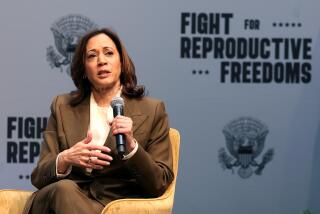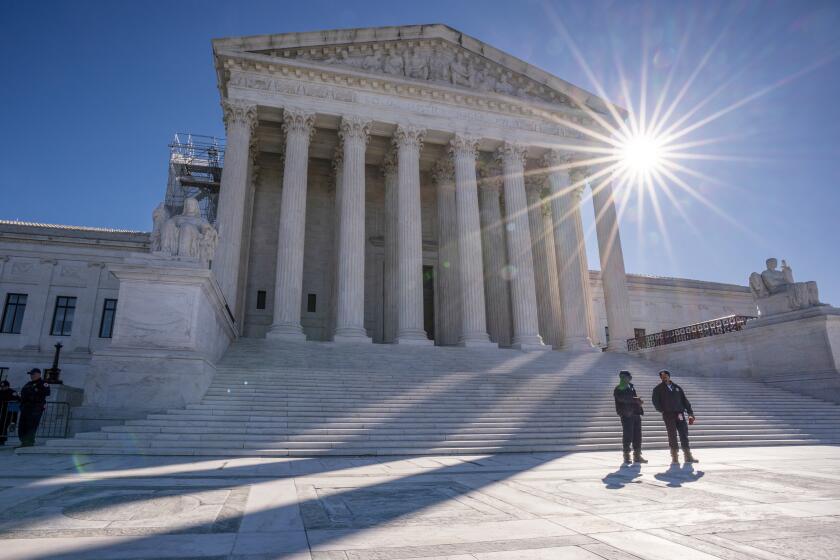Words--Potent Weapon in Fight Over Abortion
- Share via
One side chants: “Right to Life, your name’s a lie! You don’t care if women die!” The other refers to abortion clinics as “abortuaries” and “death camps.”
What one side describes as a “fetus” or a “zygote” is a “baby” or sometimes a “pre-born child” to the other.
One anti-abortion publication even uses the term “womb resident,” while abortion clinics sometimes refer to a “product of conception.”
But there is one thing that both sides concede in the battle over abortion: Words can be a potent emotional weapon.
“There’s a lot of games being played with language in the interest of manipulating public opinion,” said Douglas Johnson, legislative director of the National Right to Life Committee, the nation’s largest anti-abortion organization.
“Like in any debate, the language is everything,” added Douglas Gould, Planned Parenthood’s vice president for communications.
The most bitter and persistent conflict comes over what the two sides call each other.
Those who would end legal abortion consider themselves “pro-life,” because they believe that abortion is nothing short of slaughter. The term enrages the defenders of abortion rights, who note that many women would seek dangerous illegal abortions or even try to perform the procedure themselves if no legal option were available.
“We never call them pro-life unless we’re trying to point out how their actions are anti-life,” Gould said. “If there is any issue of life, it is the woman’s life that is at issue.”
But Gould and other pro-choice activists bristle when they are characterized as “pro-abortion.”
“We don’t think it accurately describes what we are trying to fight for,” Gould said. “We are trying to keep women’s options open.”
The news media, whose business is words and images, sometimes find themselves caught in the middle of this tricky and unwinnable argument.
Times Policy
Since July, 1982, The Times has had a policy of referring to the two sides as “anti-abortion” and “pro-choice.” The policy is spelled out in the publicly available “Los Angeles Times Stylebook.”
Johnson objected to the policy, saying that it puts the pro-choice side in a positive light and casts a negative slant on the anti-abortion argument.
However, Frederick S. Holley, The Times’ style and usage consultant, argued that those terms are “literally correct.” He noted that a recent Times poll indicated that while most Americans consider abortion murder, they also believe that a woman should have the right to decide whether to have one.
“A person who is pro-choice is not necessarily pro-abortion,” he said.
Holley also noted that many of those in the anti-abortion movement favor the death penalty. “To say ‘pro-life’ is a misnomer, and ‘anti-abortion’ is exactly correct. That is what they are all about,” he said.
Violation of Style
Sometimes, however, The Times has added to the confusion by failing to adhere to its own policy. Inadvertently, a front-page story Monday used the term “pro-life” repeatedly.
Noting the error, one editor sent a reminder of Times policy to his subordinates. The notice found its way to an anti-abortion activist, who read it Wednesday during a KGIL radio show. The anti-abortion panelists on the show said the policy shows a pro-choice bias.
“The reaction was that that means the Los Angeles Times has taken sides . . . that they were taking sides not on the editorial pages, but on the news pages,” talk show host Jim Simon said.
“This is blatant discrimination,” said Susan Carpenter McMillan, president of the Right to Life League and one of the radio panelists. “It’s censorship of your own people.”
More to Read
Sign up for Essential California
The most important California stories and recommendations in your inbox every morning.
You may occasionally receive promotional content from the Los Angeles Times.









